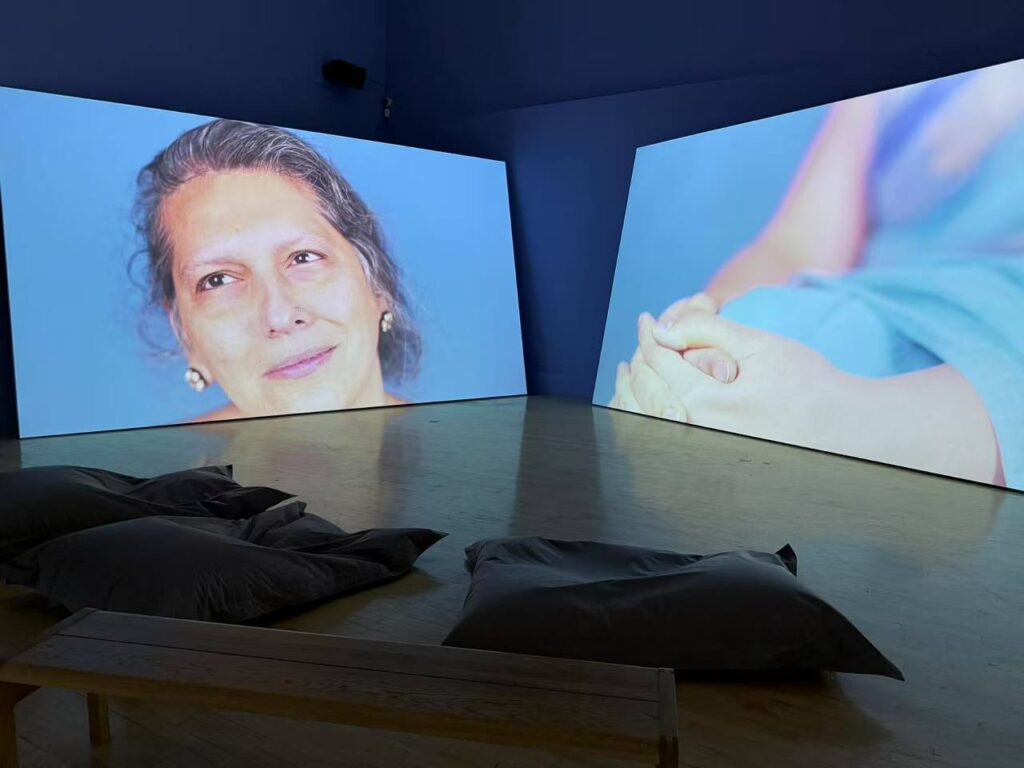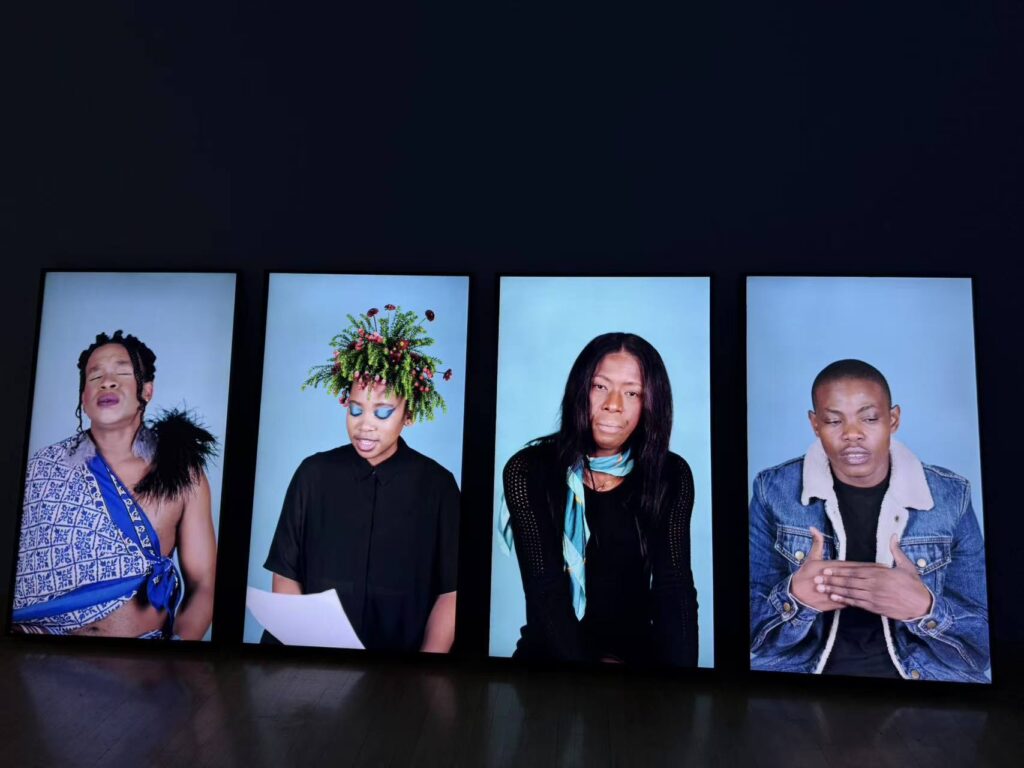Learning from “Personal Accounts” by Gabrielle Goliath
This week, I saw the video installation Personal Accounts, curated by Tessa Giblin and created by artist Gabrielle Goliath. Goliath combines still images with gestures, micro-expressions, and silent exchanges to suggest that trauma cannot always be fully conveyed through words; rather, it is often carried through the body, emotions, and memory.
This approach resonated with me because it does not centre “suffering” as the focal point of the exhibition on gender-based violence. Instead of reducing individuals to mere “victims,” silence itself is positioned as a form of resistance.

Mango Blossoms Filmed in Edinburgh, 2024
This led me to reflect on how my exhibition should explore gendered time poverty without turning women into objects of pity or surveillance.
Inspired by Goliath’s curatorial framework, I intend to present time poverty through parallel, quiet narratives rather than through overt dramatization. I am currently conceiving a multi-channel video installation that juxtaposes the life trajectories of different women, allowing these stories to unfold simultaneously and resist simplified or stereotypical portrayals.

There’s a river of birds in migration Filmed in Johannesburg, 2023
Feminist Gossip and Informal Communication in Curating
Sandra Teitge’s talk on feminist and queer curating introduced the power of gossip—not as a frivolous activity, but as an informal and often radical method of knowledge-sharing and community-building.
Inspired by Teitge’s exploration of “gossip”, I envisioned adding an interactive component to the exhibition: inviting female viewers to record their daily time allocation—for example, X hours of childcare, Y hours of overtime—and post it on a “Time Wall” within the exhibition space, gradually forming a collective portrait of time.
This informal mode of communication not only allows the audience to participate in the curatorial process, but also powerfully illustrates how overlooked daily trivialities accumulate into structural, macro-level inequalities.
Time as Material and Method
Ultimately, I’m reflecting on how we construct our perceptions of care, labor, and time—elements that are collectively endured yet rarely collectively expressed.
Reference:
Goliath, G. Personal Accounts. Video installation, 2020: https://www.instagram.com/p/DFrwOjpIlff/?img_index=2
Teitge, S. (2024). Talk on Feminist and Queer Curating: https://www.gossipgossipgossip.org/


15 February 2025 at 23:06
This blog explores the role of time in curatorial practice, particularly in relation to silence, layered narratives, and women’s experiences. It introduces different curatorial approaches, such as multi-channel video installations and interactive anonymous time billing, showing how curatorial work can challenge traditional viewing experiences and encourage audience participation.
I particularly appreciate the discussion on “silence as resistance.” Instead of framing individuals solely as “victims,” the exhibition emphasizes how trauma is carried through the body, emotions, and memory. This curatorial strategy avoids oversimplified emotional narratives and instead creates a more reflective and empowering space.
The section on “time as both a concept and material” is also very intriguing. Goliath’s four-channel video installation presents different women’s experiences of time, using juxtaposed narratives to allow the audience to engage with multiple perspectives simultaneously. This reminds me of how nonlinear time structures in curation can create more complex storytelling methods.
However, one aspect that could be explored further is how the audience experiences these shifts in time within the exhibition. For example, in the multi-channel video, how are the different screens coordinated? Are they synchronized or deliberately offset? How does this impact the viewer’s perception? Additionally, regarding the “anonymous time bill,” it would be helpful to have more details about how the audience interacts with this mechanism—do they record their time manually? Is there a real-time visual representation?
Overall, this blog effectively illustrates how curatorial practice can move beyond static displays to create more immersive and participatory experiences. Providing more insights into how audiences actively engage with the concept of time would make the discussion even richer.